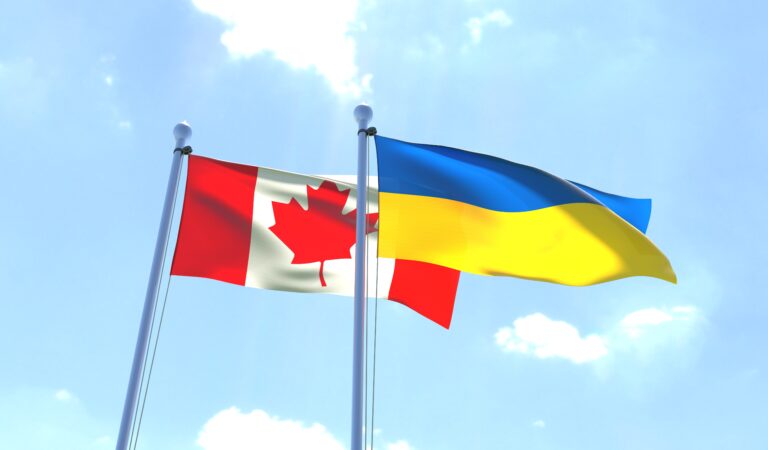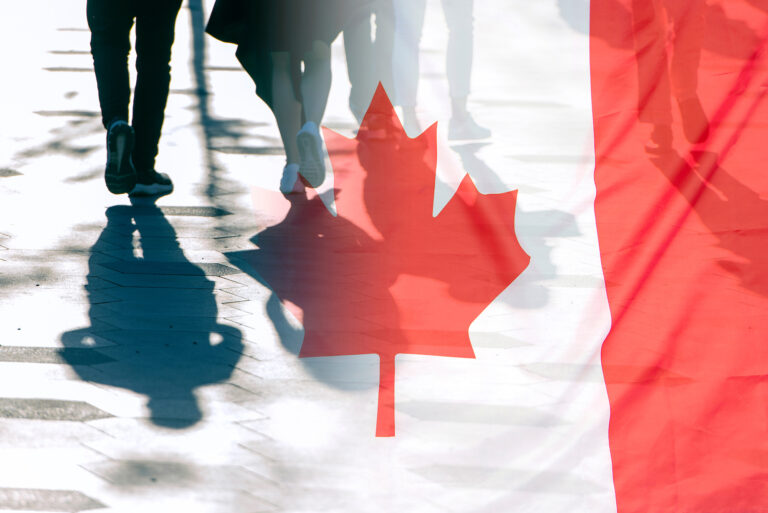The Canada-Ukraine Authorization for Emergency Travel (CUAET) pathway is going to come to an end in mid-July for those outside of Canada – unless Immigration Minister Sean Fraser extends it again.
For many of them, Canada’s open arms have been a lifeline, a ray of hope during one of the darkest and most troubling moments in their lives.
“It is unbelievable when you see so many open hearts, open doors of the houses, many Canadians who welcomed Ukrainian families for the first days and weeks upon their arrival,” Yuliya Kovaliv, the Ukrainian ambassador to Canada, reportedly told ABC News.
Pavlo Tsviliuk is one of those who came to Canada under the CUAET. A 28-year-old software engineer and developer, he and his wife had a good life in Odessa in the southern region of Ukraine.
The Russian invasion took all that away.
Read More Canada Immigration News
Flood Of Temporary Visa Approvals Through Canada-Ukraine Authorization for Emergency Travel
All You Need To Know About The Canada-Ukraine Authorization For Emergency Travel
Canada Opens Applications for Ukraine Emergency Travel Pathway
“It was understood that the war is coming and some of my friends moved from Odesa to western Ukraine even in January,” Pavlo reportedly told ABC News.
“On Feb. 23, we purchased new suitcases and power banks in order to get on the bus to the neighboring Moldova, but the next morning, when the invasion started and Russian missiles hit Odessa, we were only partially packed.”
The couple and their child crossed the Ukrainian border the next day and traveled through Moldova, Romania, Bulgaria, Greece, Hungary and Switzerland over the next few weeks. In Germany, their second child was born. From there, the family came to Canada and now live in Chilliwack in British Columbia.
In March this year, Fraser extended the CUAET pathway for Ukrainians fleeing their war-torn homeland until July 15 this year. So far, there has been no indication the immigration will extend it beyond that date.
Under that pathway, Ukrainians and their family members have until then to apply overseas for a CUAET visa free of charge. Anyone already holding a CUAET visa will have until March 31 next year to travel to Canada under the special measures.
And those already in Canada with CUAET visas have until March 31 next year to extend or adjust their temporary status through these measures, free of charge.
Almost A Million Ukrainians Applied To Come To Canada Through CUAET
The latest Immigration, Refugees and Citizenship Canada (IRCC) data reveal that between March 17 last year and Apr. 8 this year the immigration department received 995,453 CUAET applications and approved 665,777 of them.
Russian President Vladimir Putin’s forces invaded the Ukraine in February last year. Canada responded by opening its arms to Ukrainians and putting in place the CUAET pathway on March 17, 2022.
Since the start of that war, Reuters reports as many as 354,000 Russian and Ukrainian soldiers have been killed or injured.
An assessment reportedly collated by the U.S. Defence Intelligence Agency reveals Russia has suffered 189,500-223,000 casualties in all, including 35,500 to 43,000 killed in action and 154,000 to 180,000 wounded.
The Ukraine has reportedly suffered 124,500 to 131,000 casualties in total, including 15,500 to 17,500 killed in action and 109,000 to 113,500 wounded in action.
Watch Video
“Settlement services will remain available to Ukrainians and their family members after they arrive so that they can fully participate in Canadian communities while they are here,” notes the IRCC on its website.
“Ukrainians and their family members will also continue to benefit from the one-time transitional financial support, as well as from access to emergency accommodations for up to two weeks, if needed after they arrive in Canada.”
“We remain committed to helping those fleeing Russia’s illegal and unjustifiable invasion of Ukraine,” said Fraser in March.
“We continue working to provide Ukrainians with a temporary safe haven and the vital settlement services and supports they need to thrive in communities across Canada. Canada will continue to stand with the people of Ukraine, including those who’ve been forced to flee Russia’s senseless invasion.”
CUAET Offers Free Open Work And Study Permits
The CUAET pathway was meant to allow those fleeing Vladimir Putin’s war in Ukraine to stay in Canada for up to three years and make them eligible for free open work and study permits.
Ottawa upped its immigration application processing capacity in Europe after implementing the CUAET pathway and also sent mobile biometrics kits to Warsaw, Vienna and Bucharest to take the fingerprints and portrait photos of prospective Ukrainian refugees in a bid to ensure proper security precautions were taken with the surge in applications.
The government also increased its federal settlement programs to include language training, orientation, employment assistance and other supports for Ukrainians as they settle into their new communities.
In addition to settlement services, Ukrainians fleeing to Canada are also offered transitional financial assistance of $3,000 per adult and $1,500 per child.
“These funds will help Ukrainian nationals and their family members meet their basic needs, such as transportation and longer-term housing, as they arrive in communities across Canada and find a job,” notes IRCC on its website.
“Settlement services will remain available to Ukrainians and their family members after they arrive so that they can fully participate in Canadian communities while they are here. Ukrainians and their family members will also continue to benefit from the one-time transitional financial support, as well as from access to emergency accommodations for up to two weeks, if needed, after they arrive in Canada.”
Once the CUAET stops taking applications from overseas in mid-July, Ukrainians wishing to come to Canada from abroad will still be able to apply for a visa or a work or study permit through the IRCC’s existing temporary resident programs but will be subject to fees and standard requirements.
Among the immigration measures announced since the start of the Russia-Ukraine war for Ukrainians are:
- a dedicated service channel for Ukraine enquiries that is available for clients both in Canada and abroad at 613-321-4243, with collect calls accepted. In addition, clients can add the keyword “Ukraine2022” to the IRCC Web form with their enquiry and their e-mail is then prioritized;
- urgent processing of travel documents, including issuing single-journey travel documents for immediate family members of Canadian citizens and permanent residents who do not have valid passports;
- an updated web page to provide current information on measures. This page includes content in Ukrainian for ease of reference;
- permission for Ukrainians currently in Canada to extend their stay or stay longer in Canada by prioritizing the renewal of work and study permits, and extending a policy that allows individuals to apply for a work permit from within Canada. This policy allows temporary residents who receive a job offer to remain in Canada and start working while they wait for their work permit application to be processed, and;
- the issuance of open work permits to Ukrainian visitors, workers and students who are currently in Canada and cannot go home, so they can stay longer if they wish. Fees are being waived, retroactive to Feb. 22 last year, for certain travel and immigration documents, such as Canadian passports, permanent resident travel documents, proofs of citizenship, visitor visas, and work and study permits.


